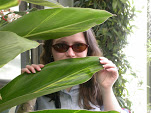Three lovely orange flowers, for your enjoyment.
 |
| Clivia cyrtanthiflora |
Clivia cyrtanthiflora, a natural hybrid between miniata and nobilis. I don't know if this particular plant is a natural hybrid or a man-made "remake," but the effect is largely the same. A large, beastly plant, it already has 3 pups, one of which bloomed for the first time this year. Division of this plant would likely require a hacksaw, the root mas is so solid. Clivias tend to tell you they want a bigger pot by pushing themselves up out of their current pot an inch or so.
 |
| Lc. Jungle Eyes |
Lc Jungle Eyes (Jungle Elf x aclandiae) is a compact cattleya bearing
thick, spotted flowers heavily influenced by aclandiae, which makes up
75% of it's ancestry (example flower photo shows C. aclandiae). The
rest of Jungle Eye's heritage comes from a miniature yellow laelia
species, esalqueana. Both species are small, and Jungle Eyes matures at about 6 inches tall. This is the first of a batch of seedlings to bloom. Younger plants of the same cross are available
here.
 |
| S. cernua |
Sophronitis cernua is an awesome little miniature plant, popping buds out of a maturing growth as it finishes out its growth. Its a creeping plant, easiest to manage on a mount due to its habit of hugging its substrate. They grow perhaps a little brighter than a Phalaenopsis, otherwise similar requirements, but are highly tolerant of lazy watering habits.
Also, a couple orange bugs - some woolly bears I found hiding under an empty pot outside. They were grouchy about being disturbed, and vacated shortly after this photo was taken. These are ground-dwelling caterpillars that eat grasses and weeds, and hibernate during the winter, then spin their cocoons in the spring. Good luck little fellas.





No comments:
Post a Comment